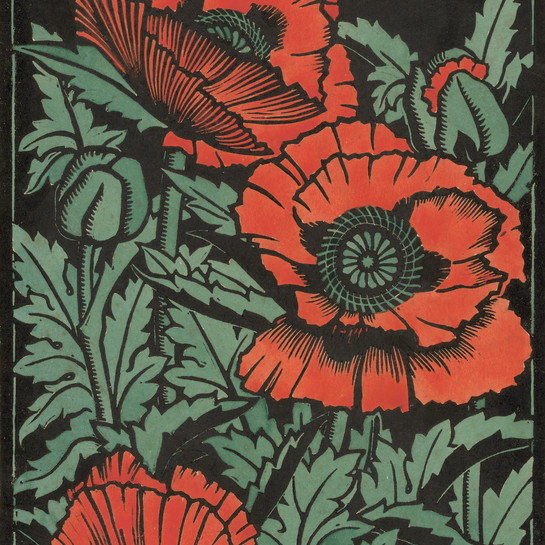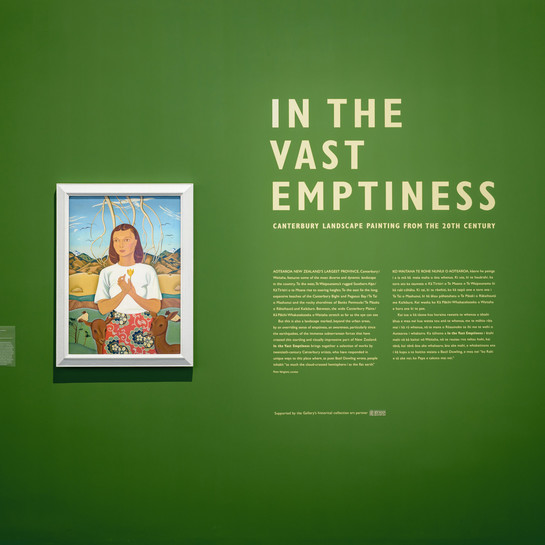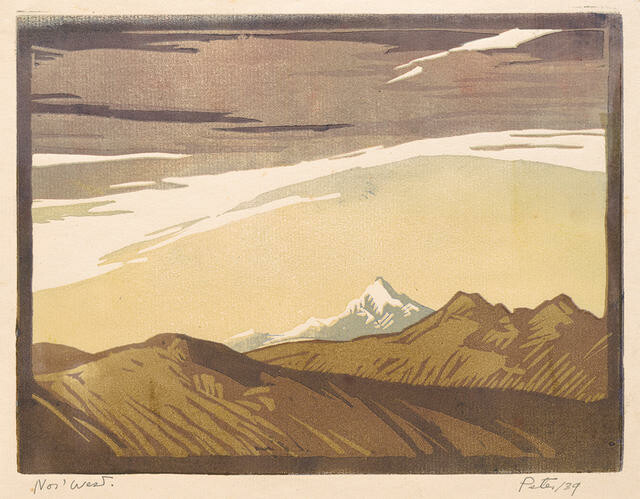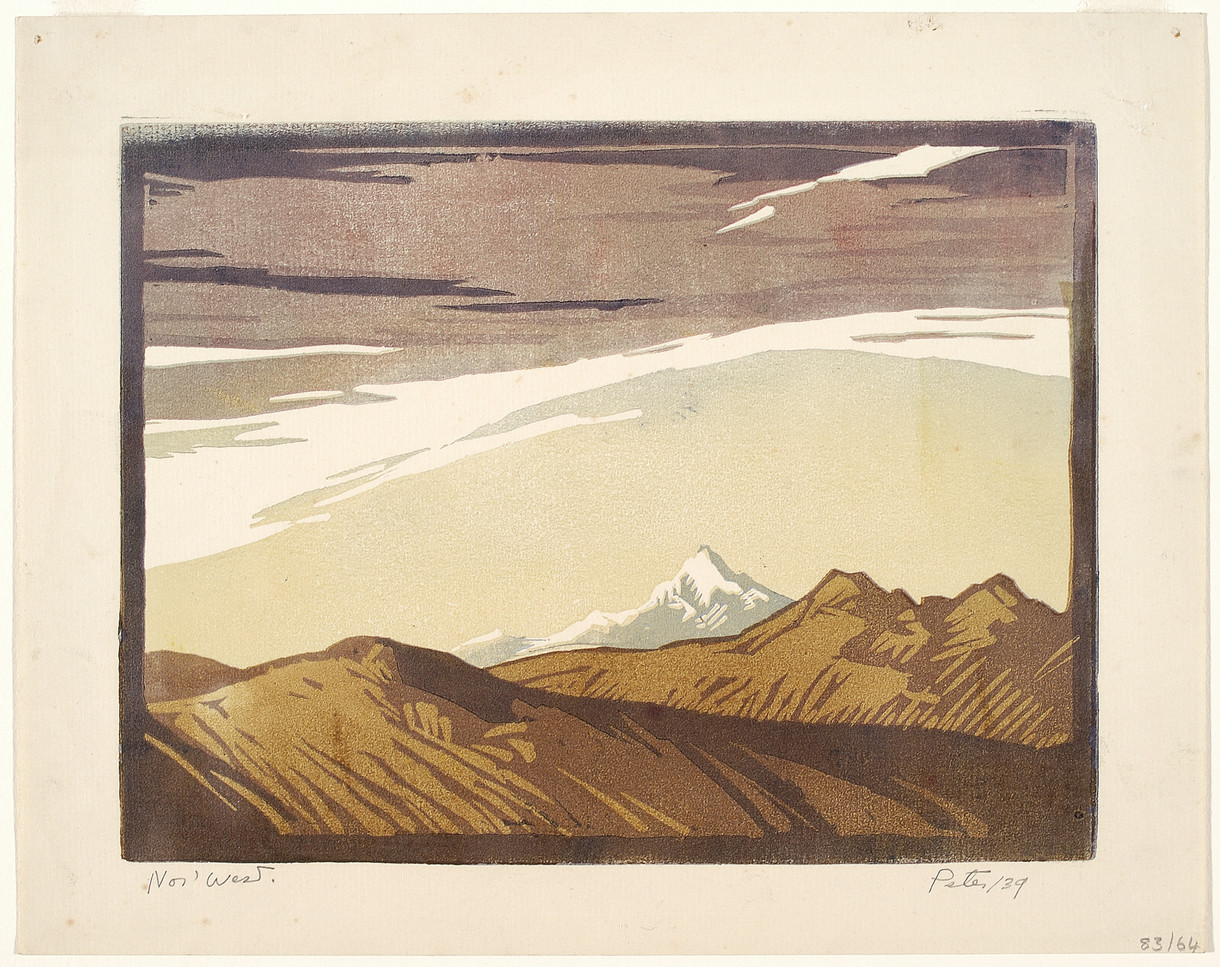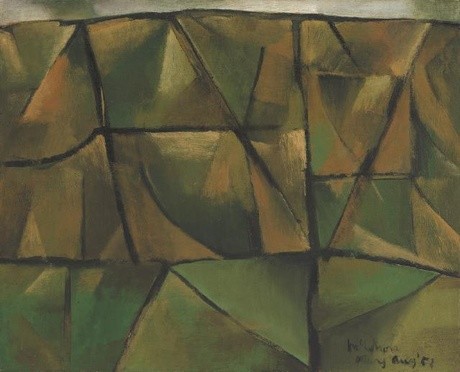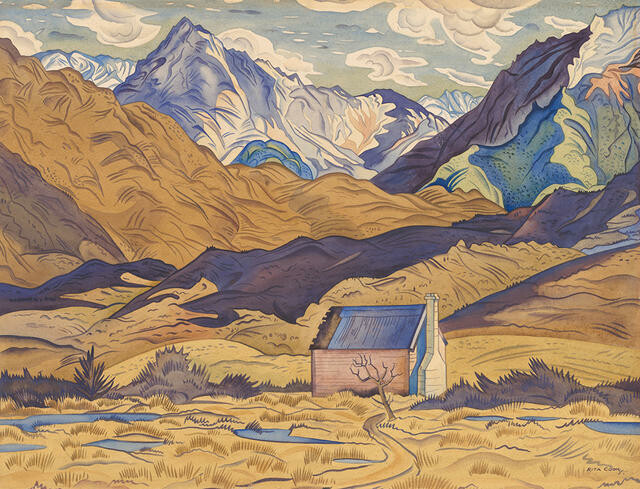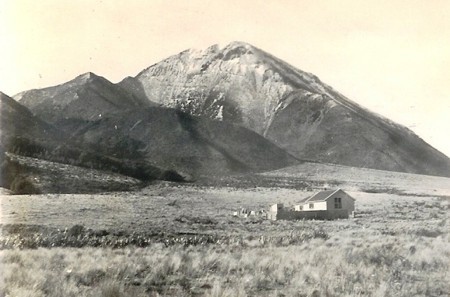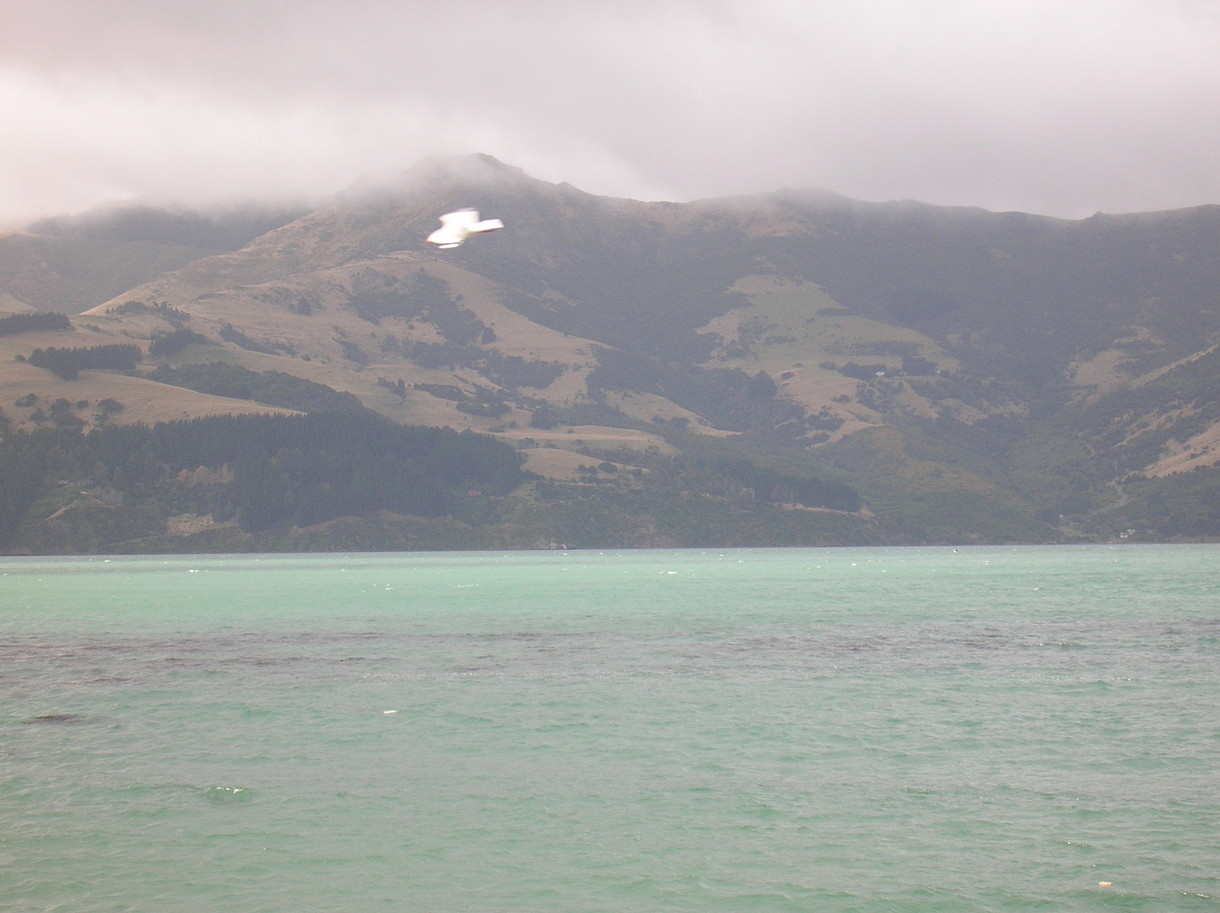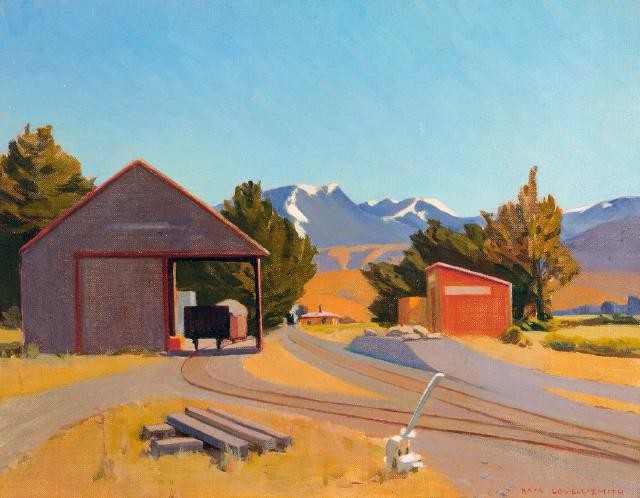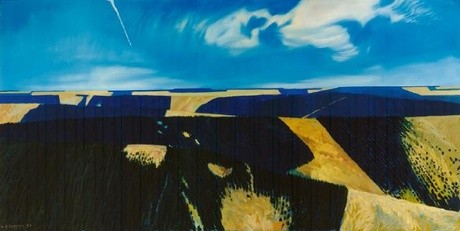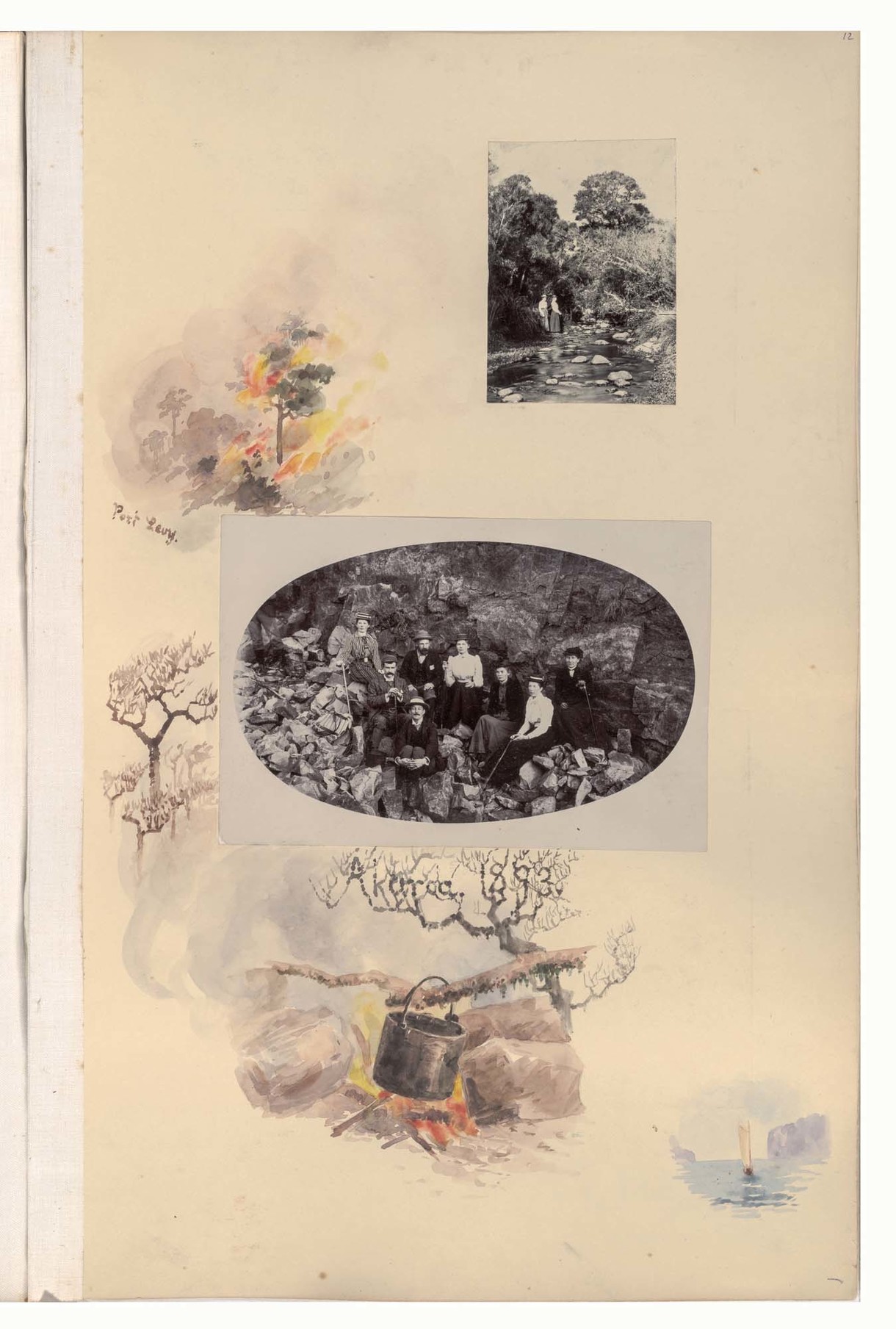Juliet Peter
Aotearoa New Zealand, b.1915, d.2010
Nor’west
- 1939
- Linocut
- Gift of W. A Sutton, 1983
- 207 x 260mm
- 83/64
Tags: brown (color), clouds, landscapes (representations), mountains, natural landscapes
According to Kāi Tahu, within the story of the creation of Te Waipounamu (the South Island), Aoraki was an atua, or demi-god, who left the home of his father, Raki, in the heavens and voyaged with his brothers to visit Raki’s first wife Poharora o Te Po. They set out to return to his father, but there was a fault in the karakia (prayer) for their return. Aoraki’s canoe – Te Waka o Aoraki – was stranded, and Aoraki and his brothers turned to stone, becoming the mountains of Kā Tiritiri o Te Moana, the Southern Alps.
'This work is interesting because it offers an unusual perspective on Aoraki [Mount Cook] – but Aoraki is full of different perspectives in Kāi Tahu culture. The mountain is, above all, a symbol of our tribal and regional identity. That’s got nothing much to do with its location – although that obviously commands cultural attention – but mainly because of its centrality in the Te Waipounamu creation story. And it is a distinctive creation story, part of a creation myth which has survived here in the remote outskirts of Polynesia while it has been lost at the centre where it came from. Aoraki made us distinctive, and it makes all people distinctive that live under its span. Juliet Peter’s depiction of it is unusual, but every way you look at Aoraki you’ve got a different perspective.' —Sir Tipene O’Regan
(He Rau Maharataka Whenua: A Memory of Land, 17 September 2016 – 18 February 2017)
Exhibition History
In the vast emptiness, 8 January - 21 August 2016
Juliet Peter said of her peers at Canterbury College School of Art in the 1930s:
They were trying to take [their practice] a step forward beyond the art society's concept of landscape. Design came into it. We all wanted to get away from the photographic approach and bring in some personal input. We were getting away from the idea that you had to view landscape as if you were a camera. We were taking the elements and adjusting them towards an individual point of view.
The Canterbury Nor’west arch dominates the sky and landscape in this composition. A common feature during Canterbury’s summer months, the long wispy cloud formation is the result of the hot föhn winds that blow down off the Southern Alps onto the foothills and plains of Canterbury. The tall snow-covered peak in the background is Aoraki/Mount Cook, the highest peak in the Southern Alps.
Juliet Peter produced several linocuts during the late 1930s, and by the 1950s was a leading exponent of lithography in New Zealand.
Peter was born in mid-Canterbury and studied at the Canterbury College School of Fine Art in the late 1930s. She married Roy Cowan in 1952, and they moved to England. Peter enrolled at the Hammersmith School of Art where she developed an interest in ceramics and lithography. The couple brought a printing press and electric kiln back to New Zealand, and by 1960 were working full-time at ceramics and printing from their home. Both artists were at the forefront of the pottery movement in New Zealand during the late 1950s and 1960s and were foundation members of the New Zealand Print Council, established in 1967.
(Label date unknown)
